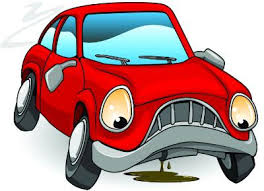Stop the bleeding!
Losing oil between oil changes? Seeing fluid underneath your car? Wondering where it might be leaking from?
All cars will develop leaks as they age and increased car mileage. If monitored closely, leaks generally are not a problem…if the  fluid or oil is replenished frequently. However, leaks only do one thing – they get worse over time. If left too long or too much coolant or oil is lost, extensive engine damage will likely occur due to overheating or lack of lubrication.
fluid or oil is replenished frequently. However, leaks only do one thing – they get worse over time. If left too long or too much coolant or oil is lost, extensive engine damage will likely occur due to overheating or lack of lubrication.
Vehicles can lose oil from a variety of locations, either by “burning” oil or from leaks. Other fluids that commonly develop leaks are the coolant, transmission fluid, differential fluid, and A/C refrigerant.
As a car owner, keep an eye on any fluids that accumulate under your vehicle. Pay attention to your garage floor or driveway where you park. If you see oil or fluid, it is important to find out what it is and where it is coming from before that reservoir runs dry.
Every week at our shop, we see cars that come in for service that have NO oil on the dipstick. This means that for some amount of time, there has been little to no lubrication on the moving parts of the engine (kind of like the Tin Man in the Wizard of Oz!). And like the Tin Man, those parts can seize and completely stop moving, leaving you stranded on the side of the road.
So, where does the oil or other fluids go? Aren’t they closed systems? In newer vehicles, generally yes. But with time and high mileage (especially over 100,000 miles), valve seals and piston oil rings get hard and lose their ability to hold the oil.
An oil filter that is not seated properly or an oil drain plug that is left loose (or even worse, over-tightened!) can leak. Over tightened drain plugs can strip the threads, requiring an oil pan replacement (about a $500 repair).
Crank seals, cam seals, and valve cover gaskets can also leak oil, as they lose elasticity over time. These seals and gaskets can be replaced and the oil leaks stopped. High mileage oil and some high quality additives are often helpful in older cars (for example, my 2004 Honda Element that has over 225,000 miles). They can help seal off these common areas of leakage and slow down the usage of oil.
Coolant can develop leaks from the radiator or from lines that carry the coolant through the system. Transmission fluid can develop leaks from the axle seals, the transmission pan, or the input/ output shaft seals. A/C refrigerant can leak from a number of lines and components.
We emphasize the importance of checking your oil level on the dipstick at least once a month, and ideally at every gas fill-up, so that you are aware of the oil level and any changes that may be occurring. At every oil change service at our shop, all fluid levels are checked and topped off to the appropriate level. If leaks are noted, we will advise you if it something that needs to be addressed now, or just monitored over time to prevent damage.
Being proactive, especially in this area of car maintenance, can ward off catastrophic engine damage.
What’s under your car??




